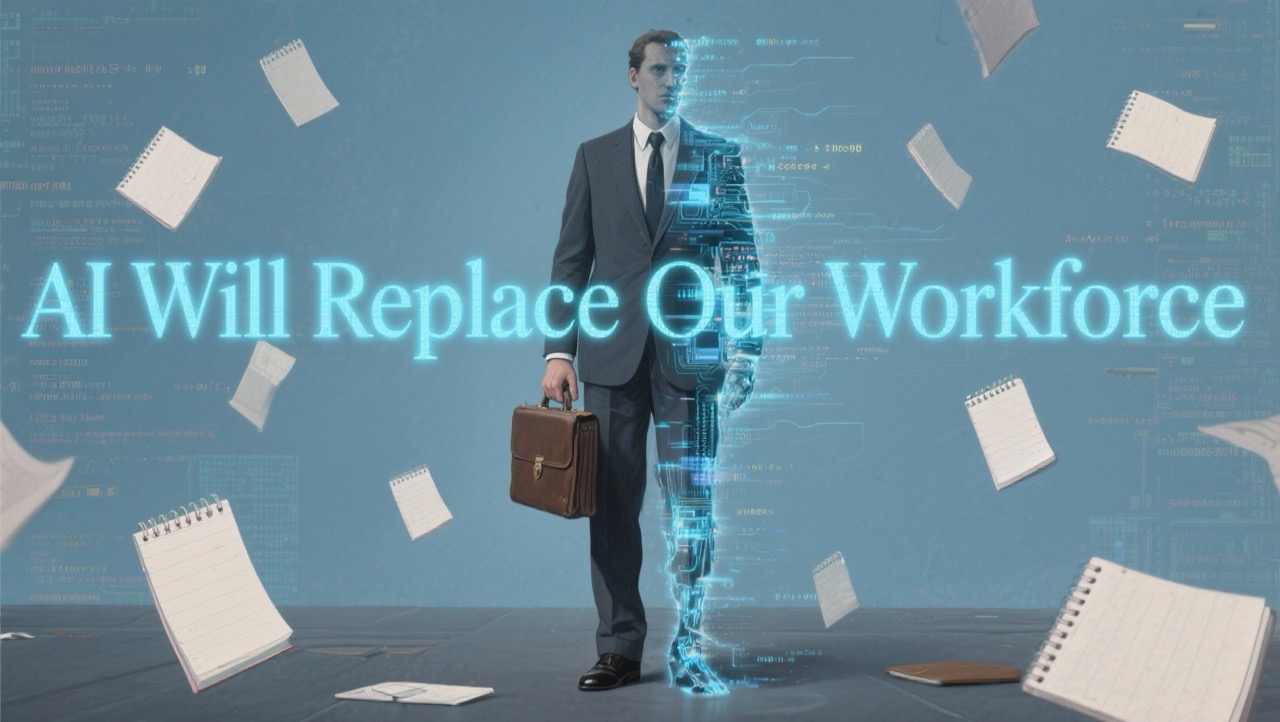
Misconception 1: “AI Will Replace Our Workforce”
Reality: AI-first operating models augment human capabilities rather than replacing workers, creating new types of jobs and elevating existing roles.
Evidence: If you think AI will shrink your workforce, think again. Your team will soon include new digital workers known as AI agents. These could double your knowledge workforce and enhance roles in sales and field support, transforming your speed to market, customer interactions, and product design. Rather than focusing on the 92 million jobs expected to be displaced by 2030, leaders should prepare for the projected 170 million new jobs and the skills they will require.

Misconception 2: “AI Implementation is Too Risky for Mission-Critical Operations”
Reality: Well-governed AI systems with proper oversight frameworks are more reliable and consistent than purely human-operated processes.
Evidence: Employee trust in AI is higher than executives realize. 71 percent of employees trust their employers to act ethically as they develop AI—more than they trust universities, large technology companies, or tech start-ups. Companies that implement proper benchmarking and governance also see improved outcomes through respected third-party evaluation systems that enhance AI safety and trust. For example, Stanford CRFM’s Holistic Evaluation of Language Models (HELM) initiative provides comprehensive benchmarks to assess the fairness, accountability, transparency, and broader societal impact of AI systems.
Sources: Stanford CRFM’s Holistic Evaluation of Language Models (HELM)
Misconception 2: “AI Implementation is Too Risky for Mission-Critical Operations”
Reality: Well-governed AI systems with proper oversight frameworks are more reliable and consistent than purely human-operated processes.
Evidence: Employee trust in AI is higher than executives realize. 71 percent of employees trust their employers to act ethically as they develop AI—more than they trust universities, large technology companies, or tech start-ups. Companies that implement proper benchmarking and governance also see improved outcomes through respected third-party evaluation systems that enhance AI safety and trust. For example, Stanford CRFM’s Holistic Evaluation of Language Models (HELM) initiative provides comprehensive benchmarks to assess the fairness, accountability, transparency, and broader societal impact of AI systems.
Sources: Stanford CRFM’s Holistic Evaluation of Language Models (HELM)


Misconception 3: “Our Organization Isn’t Ready for AI Transformation”
Reality: Most organizations are more prepared for AI transformation than leadership recognizes, and the technical requirements are more accessible than commonly believed.
Evidence: Research contradicts leadership assumptions about organizational readiness: Nearly all employees (94 percent) and C-suite leaders (99 percent) report having some familiarity with generative AI tools. However, business leaders consistently underestimate how widely their employees are already using these technologies. Implementation is also more straightforward than many assume. Even experimenting with multi-agent systems—which may appear complex—can be accomplished with modest resources. Start by creating a knowledge base with whatever data you have available. Then pair this with specific frameworks or even simple prompts to develop AI agents customized for particular tasks.
Sources: McKinsey – The State of AI in 2023

